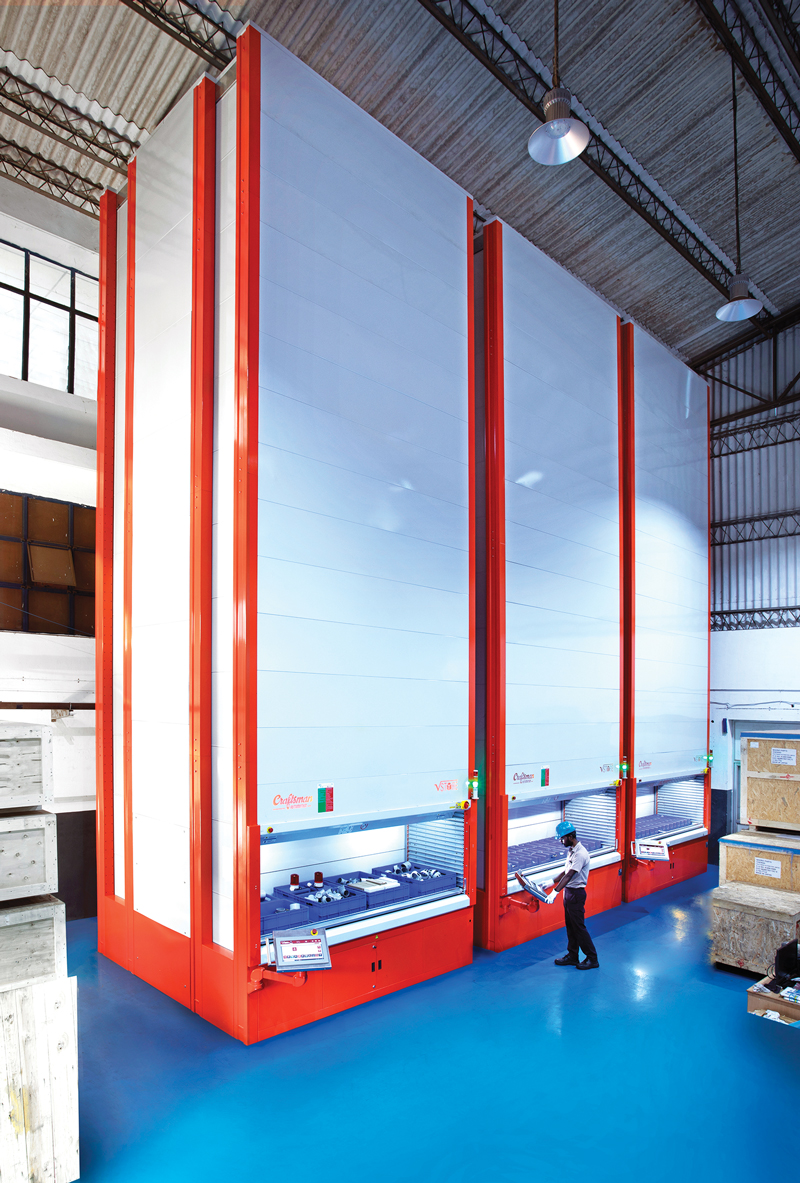We Are Excited About The Growing Importance Of Automation In Warehousing And Logistics Industry.
Manik Sarkar, Senior GM, Craftsman Automation How do you view the progress of Indian warehousing and logistics sector in the past couple of years? The Indian warehouse & logistics industry has expanded dramatically during the last few years. Companies are now having better awareness of the advantages of contracting out supply chain management to third-party logistics (3PL) providers.

Manik Sarkar
Senior GM, Craftsman Automation
How do you view the progress of Indian warehousing and logistics sector in the past couple of years?
The Indian warehouse & logistics industry has expanded dramatically during the last few years. Companies are now having better awareness of the advantages of contracting out supply chain management to third-party logistics (3PL) providers. The supply chain has transformed as a result of this change, going from being seen as a cost center to a profit center. The industry has seen a noticeable increase in the usage of automation and technology, which has enhanced operational efficiency and effectiveness. The National Logistics Policy, which the Indian Government introduced with the intention of making the logistics industry more competitive internationally, has also sparked improvements in the sector. Due to reasons including the e-commerce boom, rising automation usage, and government programs like the National Logistics Policy and Smart Cities Mission, the warehousing and logistics industry in India has seen significant expansion. We are excited about the growing importance of automation in these areas as producers of automated storage systems. This includes manufacturers simplifying production operations, 3PL providers boosting their services, and e-commerce businesses optimizing order fulfillment. There are significant opportunities for automated storage system makers in India thanks to the continued expansion of e-commerce and factory automation.
 What are the major factors that have helped the sector for a revival?
What are the major factors that have helped the sector for a revival?
One of the major factors which is helping the warehousing and logistics sector tremendously is deployment of technology and automation and the flexibility it offers while adapting to new opportunities by the sector. Several things need to be considered when thinking about logistics and intralogistics automation. First, the cost element needs to be carefully considered because installing and maintaining these systems can be expensive. Analyzing the possible advantages and return on investment they can offer is crucial. Second, for a smooth integration process, interoperability with existing systems is essential. The automation system must be compatible with existing technological improvements, including warehouse management systems. Scalability is also essential to support future expansion and shifting demands. The system must be able to grow and change as necessary. Another important factor is flexibility, as the automation system needs to be adaptable enough to accommodate a range of items, order types, and shifting client preferences.
What is your take on the new Logistics Policy as a catalyst of growth?
The National Logistics Policy (NLP) has been credited with playing a vital role in the country’s logistics industry’s expansion. It serves as a rallying cry for the logistics community and serves as a roadmap for achieving international standards while increasing productivity and cutting costs. It is anticipated that the introduction of an electronic guidebook on warehousing standards will encourage uniformity and the adoption of best practices across various warehouses. Furthermore, through cultivating a skilled workforce, the policy’s emphasis on
skill development and human resource enhancement is positioned to boost the sector. Notably, the policy emphasises gender equality and is anticipated to play a significant part in guaranteeing the NLP’s successful implementation.
What are the key challenges faced by the sector in spite of the progressive steps from the government? What is the way forward?
The logistics business still faces several substantial obstacles despite the government’s proactive actions. The sector needs to address growing fuel prices, rental rates, and infrastructure expenditures, which have significantly raised operational costs. This can be resolved by putting in place an incentive-based structure that rewards people who build warehouses and gives renters access to space for considerably less money per square foot. The government could also provide incentives for automation investments and for warehouses that utilise these technologies. Currently, interest rates are relatively high in the banking sector. The interest rates on capital expenditures must be lowered in order to promote sector growth and development.

What are the major innovations from the company in its operations to meet the growing demands in the logistics/warehousing market?
Across the nation, there is a significant surge in the implementation of automated storage systems, incorporating crane and
shuttle technology. This dynamic expansion promises to provide our customers with improved flexibility, cost-effectiveness, and advanced technological support, enabling us to effectively address the ever-changing industry requirements.
In response to this increasing demand, we have focussed on significant operational enhancements. Our primary emphasis is on seamlessly incorporating state-of-the-art technologies, and developing a strong commitment to customer-centered approaches. Notably, we have made substantial investments in streamlining last-mile delivery processes, resulting in increased efficiency and lowered operational costs.
What are your major plans to enhance operations in future?
Over the next five years, our organization is dedicated to a continuous path of innovation and product improvement. This commitment encompasses the enhancement of storage systems to boost efficiency, the integration of intelligent technologies for more advanced monitoring, and the introduction of sustainable materials to align with the changing preferences of our customers.
To bring this vision to life, we have developed a comprehensive strategy with the goal of expanding our nationwide multi-client warehouse facilities, strengthening our standalone warehousing business, and raising the standards of our transportation services. These strategic endeavors involve significant investments in cutting-edge technology solutions and warehouse automation.
Through these investments, we are poised to increase productivity, streamline our operations, and provide a wide range of consulting services to our clients.







